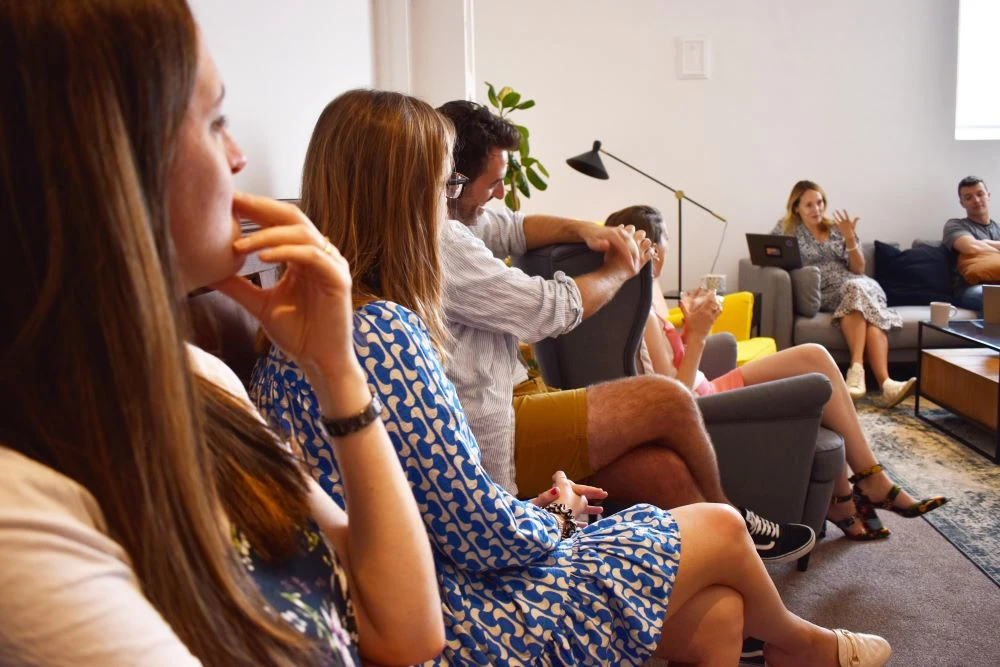It's the right thing to do
Imagine if a new public building opened in your area, like a shop or a museum. You’d expect everyone to have access to it and have the same enjoyable experience of visiting, right?
So, why doesn’t content get the same treatment?
The bottom line is that everyone should be able to have access to the same content. Accessible marketing helps to eliminate any barriers that may stand between you and your audience. By making sure that your content and campaigns are accessible, you’re demonstrating to your audience that you actively care about their experience and want to guarantee an equal experience for everyone.
It’s also worth bearing in mind that there are also some legal requirements in place for public sector organisations to adhere to when it comes to accessibility, which you can read about in full by clicking here.
An underserved audience
Around a billion people worldwide have a disability. That’s around 15% of the global population. So if you’re not producing inclusive content, you could be missing out on the potential to convert up to a billion people into engaged consumers of your content. One billion potential consumers. Just let that sink in for a moment.
Sadly, a vast number of organisations still fail to meet the needs of this underserved audience. And by neglecting to include accessibility features or inclusive content in their online and offline experiences, a user with a disability will almost certainly miss out on your vital communications and subsequently take their loyalty elsewhere. This not only poses a financial loss to an organisation, it can also have a detrimental effect on their reputation. Remember, people like to share their brand experience with others - especially if it’s been a negative one.
For this reason, it’s simply not enough for organisations to create content that meets creative standards. We are all responsible for creating content with the target audience in mind. And as creative professionals who produce digital content and experiences, it’s our responsibility to create something that is accessible for everyone.
Designing for all abilities
A common misconception is that accessibility is just about ticking the right boxes to meet some standard requirements. But in reality, inclusive design makes it possible for people of all abilities to experience your brand to the fullest extent. In the words of Debra Ruh from Ruh Global Impact, “Accessibility allows us to tap into everyone’s potential”.
Accessible marketing is all about considering the experience from every possible angle. This is to ensure that all users can enjoy the experience, regardless of their circumstances (whether permanent or temporary).
Picture this, for a person with typical vision and hearing - you’re on the train, you’ve forgotten your headphones, and whilst scrolling social media on your commute home you spot an interesting video from a brand you follow. You dutifully mute your phone (train travel etiquette, of course) only to immediately find out that the video has no subtitles. You close the video, frustrated. And do you remember to revisit the video later when you’re in a quiet space? No. You forget all about it.
The inclusive journey
Accessibility is often overlooked as a technical add-on, however it forms a key component of your entire user journey. By failing to view accessibility in this inclusive way, your user experience and overall performance will suffer. And here’s why.
Let’s look at the metrics. Customer experience (CX), for example, tends to be measured against KPIs such as customer feedback and NPS. So if you’re choosing to measure your campaign’s accessibility simply against a technical checklist then customer impact gets overlooked entirely.
With a global audience of one billion directly benefitting from accessible marketing, you’ll want to be able to understand how effective your marketing efforts are in targeting this audience segment. But without directly measuring accessibility against CX-focused outcomes, you’ll have trouble assessing the impact of your experience and an even harder job finding ways to improve.
At Eleven, we consider accessibility as an extension of our customer-based outlook, recognising that we all have individual roles to play in ensuring its success. By starting with integrating accessibility into a marketing strategy from the outset and responding to accessibility-related feedback from your customers, you are closing the loop for an inclusive customer journey.
Using the right language
Shifting your focus
Whilst there is of course no set checklist for guaranteeing your marketing communications are accessible, there are a few things you can bear in mind:
- Start with accessibility in mind
A common mistake is to create a full suite of assets and then to consider accessibility by running a quick last-minute checklist at the end, making sure all the ‘right boxes’ have been ticked. By reversing this process and considering accessibility right at the very start of a project, you are not only making your life a lot easier but you are also making sure that everyone can benefit from the finished result. At this stage you’ll also need to determine what level of accessibility is appropriate for your communications and likely audience – which is where an accessibility consultancy service can add value. - Don't make assumptions
We all know the saying about why we should never assume... And it’s as true as ever in this case. Making assumptions about your audience isn’t going to help anyone and will likely hinder your progress. Stereotypes can be harmful, so steer clear of any messaging or images that are likely to assign labels on your audience. Remember, not all disabled people will necessarily consider themselves as disabled, so it’s important not to make them feel pigeon-holed in the experience you create. It’s all about inclusive design, not exclusive content. - Use professionals
For every stage of your project, make sure you consult the help of a professional who’ll be able to keep you on track. Whether you’re looking for consultancy on creating accessible communications, a graphic designer specialising in accessible content or if you’re simply looking for someone to check over your work to make sure that it is really hitting the mark, there are plenty of talented professionals out there who can help you each step of the way. We’ve got a lot of experience with accessible campaigns, as well as having done some fantastic training to keep our skill set up to scratch, so feel free to get in touch with us today and let us know how we can help you. - Ask the audience
The most sure-fire way of making sure that your content is as accessible as you think is to ask the relevant audience segments to test it out and let you know what they think. And crucially, making direct improvements to your content off the back of the feedback received. By conducting accessibility testing sessions with your audience, you can get a true understanding of your audience’s needs and learn exactly what you can do to improve the experience for them. Feedback is a very underrated tool, and it’s one of the best ways to make sure that your content and campaigns are both inclusive and effective.
Putting the right tools in your toolbox
Crafting accessible content and communications is very much an ongoing process. With new information and resources being released all the time, marketeers have a wealth of support to help them in their pursuit of producing content for the widest addressable audience.
Whilst it can all seem a little overwhelming, there’s plenty of training, online resources and tools you can use to help you get started with creating inclusive communications. Here’s a few of our favourites:
Training:
Planners
- W3C - the global authority on accessibility standards - has put together a 4-minute video introduction to website accessibility (by no means comprehensive but a great place to start for beginners)
- You can get the lowdown on the basics of digital accessibility on this online course from AbilityNet
Doers
- The InDesign + Acccessibility Summit is an essential online training hub for InDesign professionals looking to master accessibility
Tools:
- The Web Content Accessibility Guidelines (WCAG) are the internationally recognised standard for website accessibility. These provide recommendations for making Web content more accessible.
- Don’t forget to download our free guide on checking PDFs for accessibility here
- The Accessify free website accessibility performance test
- Axe has released a handy website accessibility checker Chrome extension
Online resources:
- The BBC has a fantastic accessibility best practice guide
- There’s also some government advice on accessibility requirements for public sector bodies
- Adobe also has some great online resources and guidance on accessibility, with some additional information on standards and criteria
So, what next?
In short, inclusive marketing and providing accessible content isn’t just good for your business performance and growth by helping you to target a maximum audience. Accessibility also enhances your brand reputation by showing that you care about each and every member of your audience, regardless of their circumstances, because you do.
The benefits of accessible marketing go both ways. It enables users and brand to connect with each other in a meaningful way, whilst also meeting the needs and wants of all users elsewhere.
Whatever the next step is for you and your organisation, we hope you’ll approach the journey with accessibility in mind.
Originally published:
February 25, 2022
Updated:
December 20, 2023





